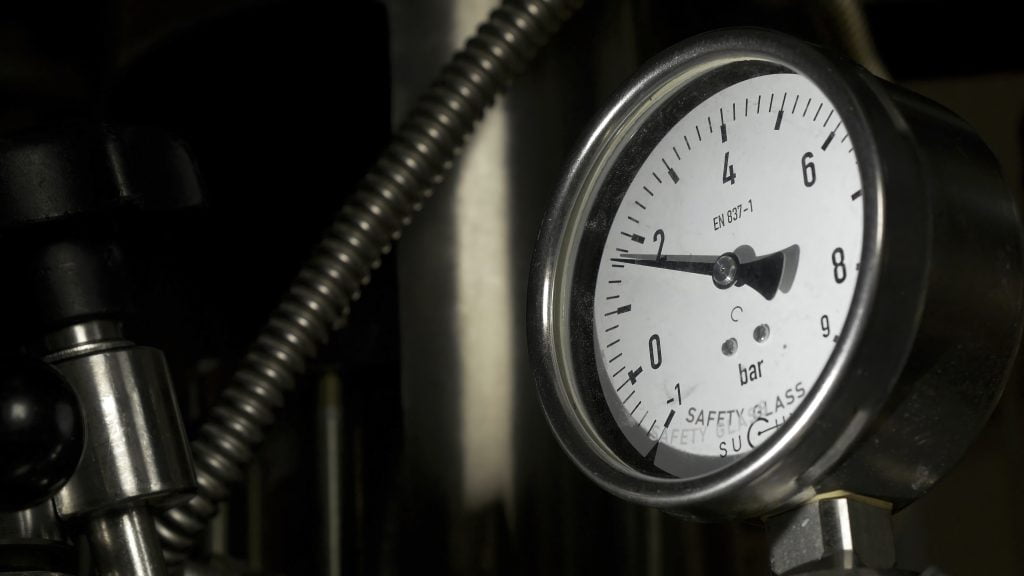Table of Contents
ToggleThe Vital Role of 134a in Commercial Refrigeration


In the realm of commercial refrigeration, understanding the nuances of 134a Reach In Cooler Pressures is not just a technicality—it’s a necessity. At Unity Cooling Systems, our collaboration with industry giants Carrier and Turbo Air has honed our expertise in this area. We recognize that managing R134a refrigerant pressures is crucial for operational efficiency and reliability in commercial cooling systems.
The Essence of R134a in Refrigeration Systems


R134a, a hydrofluorocarbon (HFC) refrigerant, has emerged as a key player in modern refrigeration, especially after replacing R12. Its environmental friendliness and efficiency make it the refrigerant of choice for commercial coolers. Understanding its properties and how they impact refrigeration systems is fundamental for any HVAC professional.
R134a Pressure Dynamics: Decoding the Basics
The pressure of R134a refrigerant in a system is a critical indicator of its functioning. The pressure readings, which vary with temperature, provide insights into the health of the cooling system. For Unity Cooling Systems, ensuring these pressures are within the optimal range is key to maintaining the efficiency of the refrigerators we service.
How Temperature Affects R134a Pressures
Temperature plays a pivotal role in determining R134a pressure. The 134a PT chart is an essential tool, providing a correlation between pressure and temperature. This chart is a go-to reference for technicians to gauge whether a system is operating correctly.
The Significance of Suction and Discharge Pressure
In refrigeration systems, suction and discharge pressures are the two critical readings. The r134a suction and discharge pressure chart is an invaluable resource, offering a clear view of what these pressures should be under varying conditions. This chart is particularly useful when troubleshooting or tuning a system for optimal performance.
R134a Reach In Cooler Pressures Chart: A Technician’s Guide
The R134a Reach In Cooler Pressures chart is a detailed guide that helps technicians understand the expected pressure range in commercial coolers. This chart is especially useful for Unity Cooling Systems‘ technicians working with Carrier and Turbo Air products, ensuring that we maintain the systems at peak efficiency.
Refrigerator 134a Pressure Chart: Ensuring Optimal Performance
For refrigerators using R134a, the pressure chart is a crucial tool. It helps in diagnosing issues and ensuring the refrigerator operates at the ideal pressure, which is vital for energy efficiency and prolonging the life of the unit.
Understanding 134a Pressures in Fahrenheit
While most pressure charts are in PSI, understanding 134a pressures in Fahrenheit provides a more intuitive understanding for technicians familiar with the imperial system. This knowledge is essential for accurate diagnosis and adjustment of refrigeration systems.
The Role of the Expansion Valve in Pressure Regulation
The expansion valve is a key component in regulating the pressure and flow of R134a in a refrigeration system. Its proper functioning is essential to maintain the desired temperature and pressure balance, crucial for the efficient operation of commercial coolers.
Troubleshooting Common Pressure Issues
Understanding common pressure-related issues in R134a systems is vital for quick and effective troubleshooting. This includes recognizing symptoms of overcharge, undercharge, and other common problems that can affect system performance.
R134a Suction Pressure for Refrigerators: A Critical Checkpoint
Monitoring the suction pressure of R134a in refrigerators is a critical aspect of maintenance. It helps in ensuring that the refrigerant is being evaporated efficiently in the evaporator, which is crucial for the cooling process.
The Impact of Ambient Temperature on R134a Pressures
Ambient temperature can significantly affect the pressure readings of R134a. Understanding this relationship is crucial for correctly interpreting pressure readings, especially in varying environmental conditions.
Final Insights: Ensuring Peak Performance in 134a Systems


- Regular monitoring of R134a pressures is essential for the health of refrigeration systems.
- Utilizing pressure charts and understanding the impact of temperature variations are key for accurate system diagnosis.
- Proper maintenance and troubleshooting of pressure-related issues are crucial for energy efficiency and longevity of the units.
- At Unity Cooling Systems, our expertise with Carrier and Turbo Air products ensures that your commercial coolers are always operating at their best.
FAQ’s


What is the optimal operating pressure for an R 134a cooler?
The optimal operating pressure of an R 134a cooler ranges depending on the temperature. The evaporator (low side) typically operates around 22-25 psig, while the condenser (high side) runs about 150-175 psig. This ensures an adequate temperature difference for effective heat transfer.
How can superheat help optimize the performance of my R 134a cooler?
Superheat, the temperature increase of refrigerant vapor above its boiling point, ensures all the refrigerant is evaporated before reaching the compressor. This prevents liquid refrigerant from entering and potentially damaging the compressor. An optimal superheat can also indicate an efficient system with minimal refrigerant waste, improving the cooler’s performance.
How does the R 134a refrigerant differ from the R12 refrigerant?
R 134a refrigerant and R12 are both commonly used in HVAC systems but have different properties. R 134a is considered more environmentally friendly, whereas R12 is known to deplete the ozone layer. Moreover, R 134a operates at higher pressures, requiring changes in system components like the compressor and condenser.
Why is coil temperature important in an HVAC system?
The coil temperature in an HVAC system is a critical factor in determining system efficiency. A lower temperature difference between the coil and the air temperature indicates a more efficient system. For an R 134a cooler, the coil temperature can impact the amount of refrigerant condensing and hence the system’s cooling performance.
How do high and low pressure sides within the R 134a refrigerant system operate?
In a R 134a refrigerant system, the compressor creates a high pressure on the high side, condensing the refrigerant into a liquid in the condenser. On the low side, the refrigerant evaporates in the coil at a lower pressure, absorbing heat and creating a cooling effect. The cycle then repeats.
How can understanding superheat enhance the performance of my R 134a cooler?
Understanding superheat can help you identify if your R 134a cooler is operating efficiently. If the superheat is too high, it can indicate a lack of refrigerant or a restriction in the cap tube. Conversely, a lower superheat could mean an excessive amount of refrigerant. Adjusting the level of the superheat can therefore enhance your R 134a cooler’s performance.
What steps can I take to determine the refrigerant pressure in my R 134a cooler?
To determine the refrigerant pressure in your R 134a cooler, you can use pressure gauges connected to the high and low-side service ports. These readings, in combination with the coil and air temperatures, can help you understand the system’s operation and efficiency.
What role does the filter drier play in optimizing R134a cooler performance?
The filter drier in an R 134a system absorbs moisture and removes debris from the refrigerant, protecting the compressor and other components. This can not only prevent system damage, but also increase efficiency and promote better cooling performance.
How does ambient air temperature affect the performance of my R 134a cooler?
The ambient air temperature can directly affect an R 134a cooler’s performance. Higher temperatures can cause an increase in head pressure, potentially overloading the compressor and leading to an increase in energy consumption. Conversely, lower outside temperatures can decrease the condensing temperature and improve cooler performance.
📞 Connect with Unity Cooling Systems Today!
![]()
![]()
Are you ready to elevate your commercial refrigeration experience? We’re here to help! At Unity Cooling Systems, we understand the importance of reliable and efficient cooling solutions. That’s why we invite you to contact us for any queries or support you need. Whether it’s about 134a Reach In Cooler Pressures, HVAC systems, or anything in between, our team is eager to assist you.
But why stop there? Join our growing community on LinkedIn to stay updated with the latest trends, tips, and insights in commercial refrigeration. It’s a great place for professionals like you to connect, share stories, and dive into anything related to HVAC systems.
And for a visual treat, don’t forget to check out our YouTube channel. Here, you’ll find an array of informative videos that bring our expertise right to your screen. From detailed explanations on refrigeration equipment to insights on R-134a systems, our video library is a treasure trove of knowledge.
Prefer a direct conversation? We’re just a phone call away. Dial +1 (281) 818-5959 and let’s talk about how we can make your refrigeration system more efficient and reliable. Whether it’s about installing a new compressor, understanding the nuances of R-134a and R-12 refrigerants, or getting the proper subcooling for your system, we’re here to provide the solutions you need.
At Unity Cooling Systems, we’re more than just a service provider; we’re your partner in commercial refrigeration. Let’s work together to ensure your systems are running at their best. Contact us, follow us, watch us – let’s keep your coolers cooling efficiently! 🌡️❄️🔧






